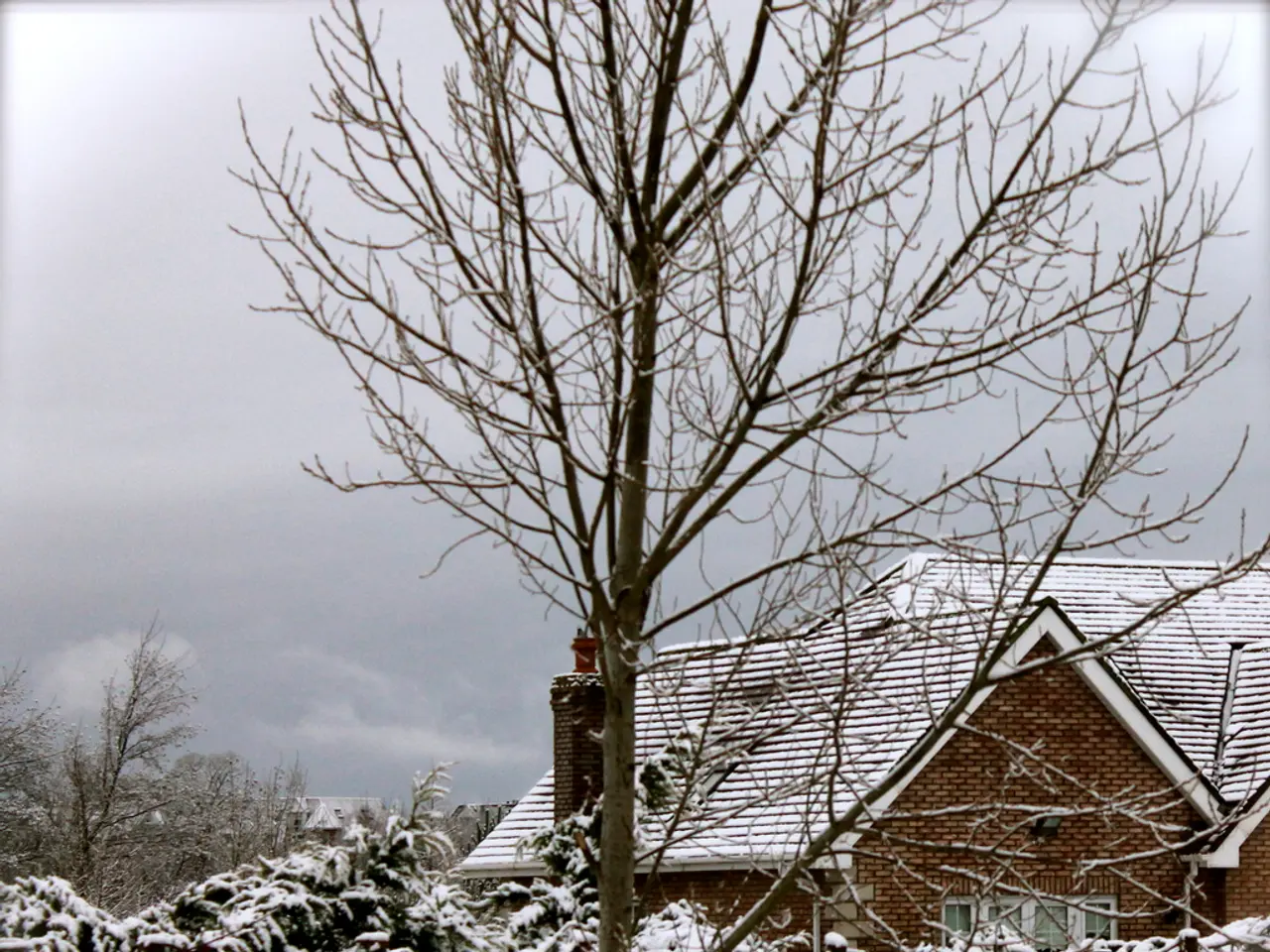Preparing Your Garden for Winter Safety
As the chill of winter approaches, it's essential to take measures to protect your garden and houseplants. Here's a step-by-step guide to help you prepare.
Understanding the Weather
To anticipate when to take protective steps, monitor local temperature drops and frost risks. Keep an eye on forecasts for hard freezes, which can be destructive to vegetation, occurring at temperatures between 25 to 28°F (-4 to -2°C).
Preparing Your Garden
- Amend and arm the soil: Insulate roots from freezing by adding extra soil around pots, mulch, or leaves. For container plants, burying pots partly in soil can help insulate the root ball.
- Clean up dead and rotting plant material: Promptly remove dead leaves and debris from garden beds and mow or aerate lawns to prevent fungal infections caused by trapped moisture.
- Organic matter: Before temperatures drop further, apply organic matter such as well-rotted compost or manure to the soil. A layer one to two inches thick will keep the soil healthy and prevent erosion.
- Watering: Reduce watering frequency since plants need less water in winter, but ensure soil does not dry out completely. Misting can help some plants maintain humidity.
- Winter watering: Maintaining moist soil is crucial for plants during cold snaps. Water the garden 24 hours before hard-freezing weather arrives.
Preparing Your Houseplants
- Adjust watering: Certain low-maintenance houseplants like snake plants, aloe vera, and pothos require minimal watering in winter and should be kept out of direct sunlight but not neglected entirely.
- Sensitive plants: Give extra care to sensitive trees and plants by placing containers near a warm wall, adding mulch or burlap for insulation, and avoiding sudden temperature swings to prevent root rot.
- Up-potting: For container-grown hardy plants, some recommend up-potting before winter, but timing is crucial. Late summer or early fall transplanting lets roots grow before frost, while potting too close to freezing risks root rot due to freeze-thaw cycles.
Additional Tips
- Protecting the garden: Remember to protect water features by removing ceramic watering systems indoors as soon as they are drained and ensuring pumps do not freeze.
- Shake newly planted trees gently from side to side to determine if they need additional support. If the root moves when the tree is shaken, it should be kept staked throughout the winter season.
- Removing spent plants protects the garden from pests laying eggs that could damage healthy plants.
- Learn about other hardy houseplants that can be planted and taken care of during the winter season.
- Frost can injure plants and compromise their health and bountifulness. The layer of organic matter should be thin enough for hard frosts to penetrate and exterminate overwintering pests.
By following these steps, you can maintain root and soil health, prevent disease, and accommodate the reduced growth and water needs typical of winter months.
Read also:
- Wawa avian tests positive for West Nile disease
- The market for Kraft Lignin is projected to increase at a rate of 7.2% each year until 2034.
- Revising hair care practices with cynorrhodon extracts for addressing hair fragility
- Filipino Card Games Find Their Home at Gamezone, Offering an Unmatched Experience!







